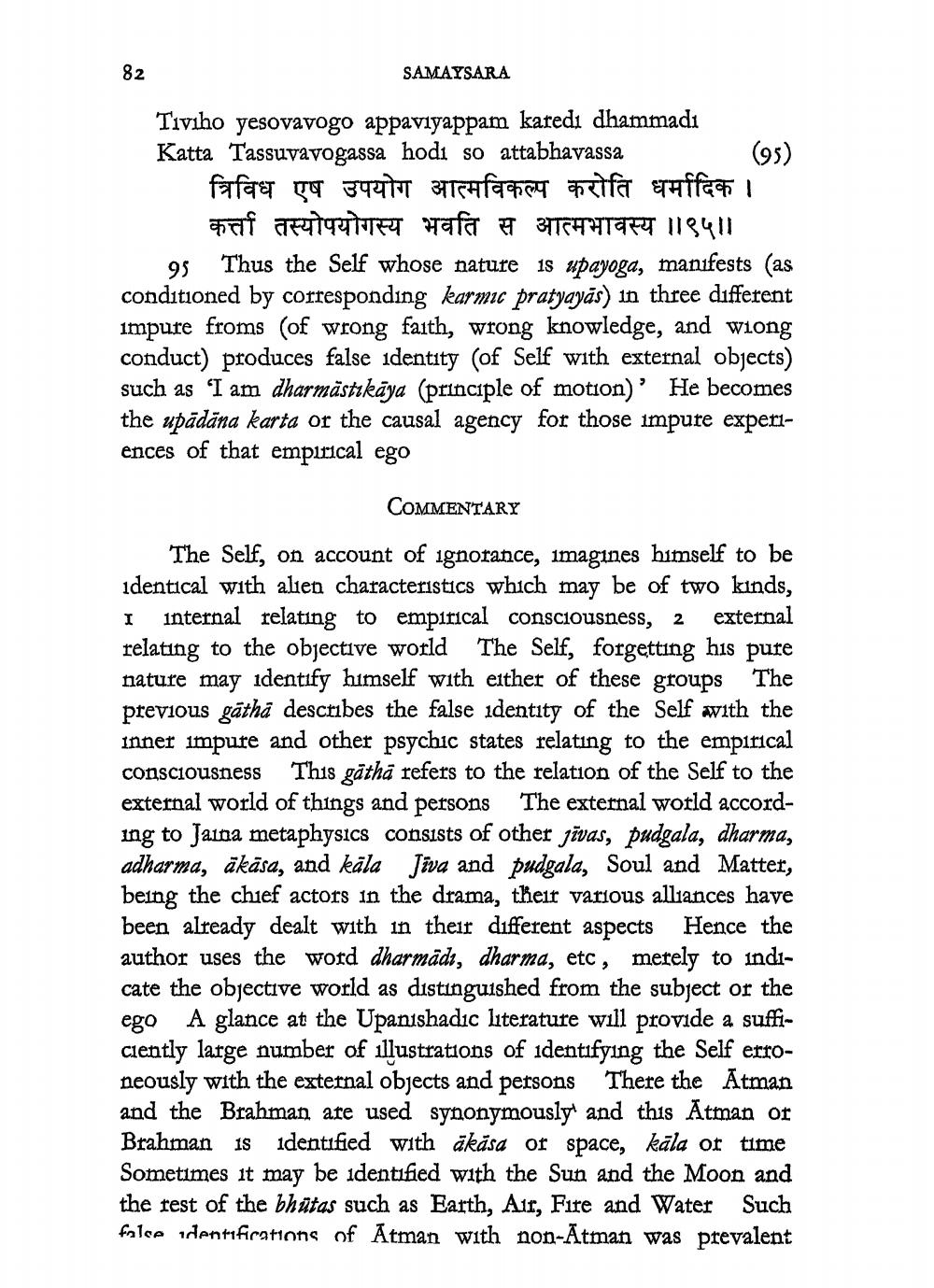________________
82
SAMAYSARA
Tiviho yesovavogo appaviyappam karedi dhammadı Katta Tassuvavogassa hodí so attabhavassa
(95) त्रिविध एष उपयोग आत्मविकल्प करोति धर्मादिक ।
कर्ता तस्योपयोगस्य भवति स आत्मभावस्य ॥९५॥ 95 Thus the Self whose nature is upayoga, manifests (as conditioned by corresponding karmic pratyayās) in three different impure froms (of wrong faith, wrong knowledge, and wiong conduct) produces false identity (of Self with external objects) such as 'I am dharmāstikāya (principle of motion)' He becomes the upādāna karta or the causal agency for those impure experiences of that empirical ego
COMMENTARY
The Self, on account of ignorance, imagines himself to be identical with alien characteristics which may be of two kinds, I internal relating to empirical consciousness, 2 external relating to the objective world The Self, forgetting his pure nature may identify himself with either of these groups The previous gātha describes the false identity of the Self with the inner impure and other psychic states relating to the empirical consciousness This gåthā refers to the relation of the Self to the external world of things and persons The external world according to Jaioa metaphysics consists of other jīvas, pudgala, dharma, adharma, ākāsa, and kåla Tīva and pudgala, Soul and Matter, being the chief actors in the drama, their various alliances have been already dealt with in their different aspects Hence the author uses the word dharmādı, dharma, etc, merely to indicate the objective world as distinguished from the subject or the ego A glance at the Upanishadıc literature will provide a sufficiently large number of illustrations of identifying the Self erroneously with the external objects and persons There the Atman and the Brahman are used synonymously and this Atman or Brahman is identified with akasa of space, kāla or time Sometimes it may be identified with the Sun and the Moon and the rest of the bhūtas such as Earth, Air, Fire and Water Such folce dentifications of Atman with non-Atman was prevalent




